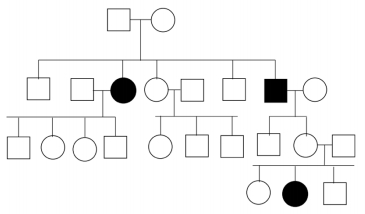For a number of human hereditary conditions, genetic testing is available to identify heterozygous carriers. Some heterozygous carrier testing programs are community-based, often as part of an organized effort targeting specific populations in which a disease and carriers of a disease are relatively frequent. For example, carrier genetic testing programs for Tay–Sachs disease target Ashkenazi Jewish populations and sickle cell disease carrier testing programs target African American populations. The testing is usually free or available at minimal cost, the wait time for results is short, and the results are confidential and unavailable to third parties such as insurance companies. Neither the Tay–Sachs nor the sickle cell allele produces serious consequences for heterozygous carriers.
Do you personally think you would participate in the kind of carrier genetic testing described if you were a member of a population targeted for such testing?
Table of contents
- 1. Introduction to Genetics51m
- 2. Mendel's Laws of Inheritance3h 37m
- 3. Extensions to Mendelian Inheritance2h 41m
- 4. Genetic Mapping and Linkage2h 28m
- 5. Genetics of Bacteria and Viruses1h 21m
- 6. Chromosomal Variation1h 48m
- 7. DNA and Chromosome Structure56m
- 8. DNA Replication1h 10m
- 9. Mitosis and Meiosis1h 34m
- 10. Transcription1h 0m
- 11. Translation58m
- 12. Gene Regulation in Prokaryotes1h 19m
- 13. Gene Regulation in Eukaryotes44m
- 14. Genetic Control of Development44m
- 15. Genomes and Genomics1h 50m
- 16. Transposable Elements47m
- 17. Mutation, Repair, and Recombination1h 6m
- 18. Molecular Genetic Tools19m
- 19. Cancer Genetics29m
- 20. Quantitative Genetics1h 26m
- 21. Population Genetics50m
- 22. Evolutionary Genetics29m
2. Mendel's Laws of Inheritance
Pedigrees
Struggling with Genetics?
Join thousands of students who trust us to help them ace their exams!Watch the first videoMultiple Choice
This pedigree exhibits which of the following inheritance patterns?

A
Autosomal Dominant
B
Autosomal Recessive
C
X-linked Dominant
D
Autosomal Polymorphism
 Verified step by step guidance
Verified step by step guidance1
Examine the pedigree chart to identify the affected individuals, which are represented by filled symbols.
Determine if the trait appears in every generation. If it does, it might suggest a dominant pattern. If it skips generations, it might suggest a recessive pattern.
Check if both males and females are affected equally. If so, it suggests an autosomal pattern rather than a sex-linked pattern.
Look for instances where two unaffected parents have an affected child. This is indicative of an autosomal recessive pattern.
Consider the possibility of carriers in the pedigree. In autosomal recessive inheritance, unaffected parents can be carriers of the trait, passing it to their offspring.
Related Videos
Related Practice
Open Question




